Jan’s Flies
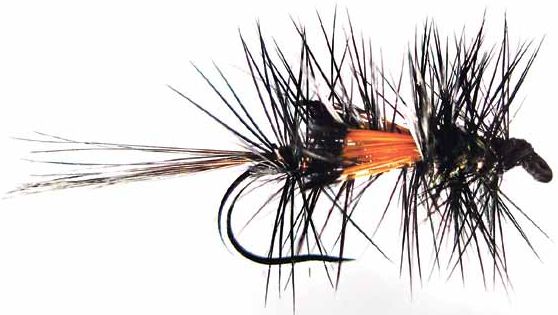 Presented from Issue 103, April 2013
Presented from Issue 103, April 2013
Recently I fished with a friend on Arthurs Lake. It is always interesting fishing with other people — not only to have some different company, but to learn some new techniques. I fish a nine foot, six weight for dries and if there are no fish moving off come the dries and I change to semi-wets or full wets with a sinking line. A DI3 is my favourite on a ten foot, six weight rod. I like the longer rod when lifting the flies to the surface on the retrieve — especially if using 2-3 flies and a long leader. Back to fishing with my friend though - who happens to be a dry fly purist for some reason. It was pleasant looking for fish, but there was not much moving so we were prospecting as much as anything.
- Written by Stephen Smith - Rubicon Web and Technology Training
- Parent Category: Articles
- Category: Jan’s Flies
- Hits: 3756
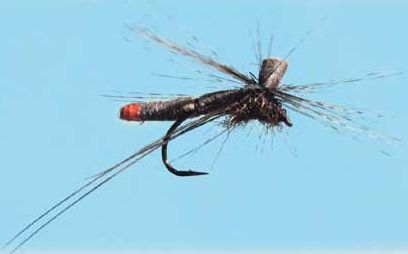 Presented from Issue 102, February 2013
Presented from Issue 102, February 2013
Around the state at the moment there is a multitude of insects of every size and description from tiny midge to large grasshoppers. On a recent trip to my favourite remote western lake I noticed the abundance of craneflies. Walking in scrubby areas and brushing past the bushes would put out dozens of these insects. Most days in this area there is wind and even though craneflies are quite large they are delicate. It does not take much wind to push them onto the water and trout certainly have them on the menu.
- Written by Stephen Smith - Rubicon Web and Technology Training
- Parent Category: Articles
- Category: Jan’s Flies
- Hits: 4023
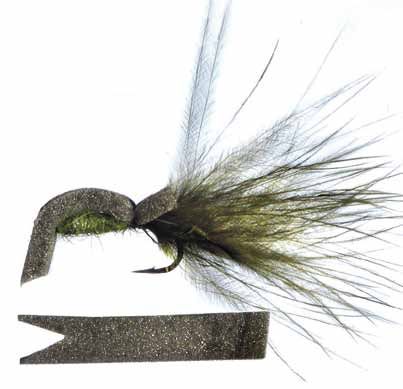 Presented from Issue 101
Presented from Issue 101
Over the last couple of months I have traveled to some of Australia’s most remote red sand country where there were fish in remote billabongs.
These are fed by the northern waters flowing into Lake Eyre Basin. To be invited onto a million acre station catching golden perch (yellow belly) and grunter was a great privilege and is another fishing adventure ticked off.
- Written by Stephen Smith - Rubicon Web and Technology Training
- Parent Category: Articles
- Category: Jan’s Flies
- Hits: 4137
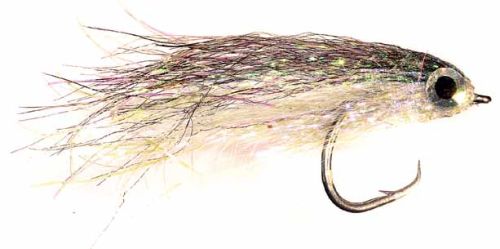 Jan's Flies Issue 99
Jan's Flies Issue 99
Presented from Issue 99
I suppose everybody is geared up for the new trout season. My start was during July by thoroughly cleaning up my fly tying studio. It is so nice to have everything so one can find things. It will be some time before the fish are seriously looking up so wets will be the go for me.
Exciter flies or lure flies will be my choice for action. May I suggest the use of two flies in a larger point fly with something smaller as a dropper. The point fly really needs to be at least four feet from the dropper.
Point patterns could include Yetis, Woolly Buggers, Matukas, Tom Jones, Wigram’s Robin and fur flies in various colours. For droppers, something quite small. This may be English wets, spider patterns are good tied with a really good moving hackle, nymph patterns dressed lightly as you must remember it is really early in the season and there is not much growth in any insects for the next couple of months.
- Written by Stephen Smith - Rubicon Web and Technology Training
- Parent Category: Articles
- Category: Jan’s Flies
- Hits: 3720
Presented from Issue 98
Over early winter I spent some time on Tasmania’s beautiful east coast. With all that water beckoning me of course one would have to go fishing. Flathead would be the target but then I guess anything that may swim past get something thrown at them. Certainly there was a lot of salmon around, but the majority of schools I saw were too far away to cast to.
- Written by Stephen Smith - Rubicon Web and Technology Training
- Parent Category: Articles
- Category: Jan’s Flies
- Hits: 3595
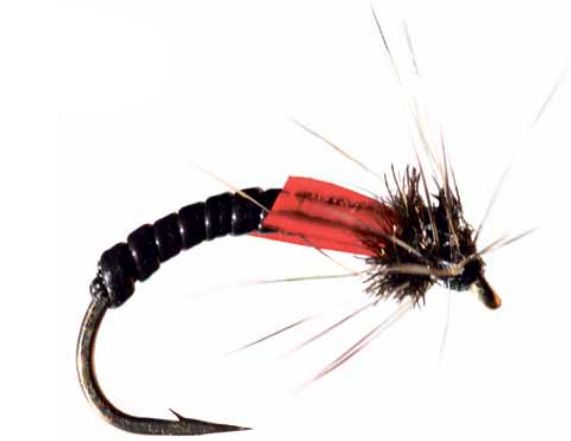 Presented from Issue 95
Presented from Issue 95
I do not want to sound all flowery and fluffy, but some of my recent fishing on Tasmania’s superb streams where the little birds flutter about at rod’s length and the caddis are like snowflakes hovering in the clouds all excites me. What must it do to the trout? There are, of course, many insects on these small streams, the main one at this time of year is the mayfly. But the eager trout are mostly happy to take almost anything you may present to them on the shallow bubbly waters. A little Red Tag size fourteen or a Deer Hair Caddis work well. Where the waters have some depth, my personal choice is a small wet, a nymph, beetle or stick caddis.
- Written by Stephen Smith - Rubicon Web and Technology Training
- Parent Category: Articles
- Category: Jan’s Flies
- Hits: 4479
Presented from Issue 91
Autumn is such a wonderful time of the year. Cool nights, mostly sunny days and light winds. As I write this I am looking out over Great Lake – there is a slight ripple and some superb slicks gliding about here and there. I will go and look more closely at them after lunch. Hatches of jassids and ants are on the trout’s menu and both of these small insects end up in the slicks that form with the morning breeze.
The trout often go crazy on them.
- Written by Stephen Smith - Rubicon Web and Technology Training
- Parent Category: Articles
- Category: Jan’s Flies
- Hits: 3940
Presented from Issue 92
My season was filled with a mixture of highs and lows. I spent some time in the Kimberley and experienced some great fishing there. I thought previously that Cape York probably had the best salt water fishing in Australia, but northwestern Australia also has its fair share.
The highlight was polaroiding a sailfish and seeing the hookup. That is as good as it gets.
My trout season though had its good, bad and ugly side though.
- Written by Stephen Smith - Rubicon Web and Technology Training
- Parent Category: Articles
- Category: Jan’s Flies
- Hits: 4066
Jan’s Flies
We are lucky in Tasmania to have the many lakes that are surrounded by gum trees.
There are numerous insects that live in the trees, and on the right day they will be blown onto the water. Gum beetles are one delicacy for trout and they often cruise the shallow margins of a lake looking for these and will slurp them down with gusto. So when the breeze is warm the rod and the flies are put into the car and away I go.
- Written by Stephen Smith - Rubicon Web and Technology Training
- Parent Category: Articles
- Category: Jan’s Flies
- Hits: 3620
Jan’s Flies Issue 89
It’s Christmas time again and that means dry fly fishing is well underway. There are not many fly fishers who don’t look forward to fishing the dry. Seeing the fish take the fly really starts the adrenalin flowing.
The fly this time is a very well tested emerger which I suppose is nearly a dry but does sit rather low in the water surface. The entire fly except for the tail is tied out of CDC feathers. The cul de canard, or CDC, feather comes from around the oil preen gland of the duck it is this feather fly tyers love to use.
- Written by Stephen Smith - Rubicon Web and Technology Training
- Parent Category: Articles
- Category: Jan’s Flies
- Hits: 3608
Jan’s Flies
Come in spinner that’s what all the fly fishing people are waiting for—the spinner hatches of spring time. On the rivers it will happen through October sometimes, it’s mostly dependent on the weather it’s those balmy mild spring days with little or no wind that’s required. On the highland lakes the first to be seen are normally a month later and for the past two seasons it has been so good one is not sure where to go first. So October and November are fairly well booked for me it will be mostly shore based fishing on the lowland rivers and highland lakes. Mid to late morning on the rivers and on a really good day the hatch can go on till late afternoon mind you that’s the rarity not the norm. Highland lakes spinner hatches are a little different in I like a slight breeze pushing off shore that’s to carry the spinners out onto deep water then better fish will hopefully feed. River fish will mostly work a beat. They will cover a few metres and disappear for a short time and then reappear and start the beat again. Stillwater fish will rise spasmodically so keep a sharp eye on the rise and try and judge which way the fish will head taking note where the fishes head is. This will mostly give the direction. Place the fly out in front so the fish will come upon it. My spinner patterns are fairly simple both red and black. Black Spinner Hook – Finewire size 14 12 10 Thread – Black Tail – Black cock fibres Rib – Very fine silver or copper wire Hackle – Black cock hackle Red Spinner Hook – Finewire size 12 10 Thread – Orange Tail – Black cock fibres Rib – Silverwire Head – One fine peacock herl Hackle – Red cock hackle Method for red spinner 1. Place hook in vice 2. Starting at the eye end take the thread the full length of the shank 3. Place a small bunch of cock fibres on top of rear end of shank tie down firmly and cut excess fibres away 4. Tie in rib and take thread two thirds of the way toward the eye now bring rib forward with nice even turns to where the thread is hanging cut away excess rib 5. Take one fine peacock herl and tie in cut away excess herl. Tie in hackle and wind forward toward eye making a nice tight hackle cut away any excess hackle 6. With the fine peacock herl wind it through the hackle try not to crush the hackle too much cut away excess peacock herl 7. Whip finish cut thread away and varnish The black spinner is tied the same but omit the peacock herl. Call 1300 787 060 Express
- Written by Stephen Smith - Rubicon Web and Technology Training
- Parent Category: Articles
- Category: Jan’s Flies
- Hits: 3359
Current TFBN
Click above for current issue content. The current issue of TFBN is extensive and topical. In Tackle Stores, Newsagents and by subscription.
Delivered to your door for $48 for 2 years (8 issues). To subscribe, send Mike $48 via www.paypal.com.au . (Basic instructions are here) The email is at Contact Us. Your address will be included from PayPal.
Or phone Mike with your c/c handy on 0418129949
Please ensure your details are correct, for Mike to organise delivery.
TFBN Newsletter Sign up Form
Why not submit an article ?
When you have finished for the day, why not have a brag about the ones that didn't get away! Send Mike an article on your fishing (Click here for contact details), and we'll get it published here. Have fun fishing - tasfish.com
Category Descriptions
Here is a list of all of the Article Categories. The number in Brackets, eg (13) is the number of articles. Click on Derwent River and all articles relating to the Derwent will be displayed in the central area.
Articles by Category
-
Rivers (3)
-
Saltwater and Estuary Fishing (149)
-
Kayak Fishing (34)
-
Lakes (1)
-
Great Lake (62)
-
Lake Leake (52)
-
Woods Lake (16)
-
Lake Augusta (11)
-
Huntsman Lake (13)
-
Lake Pedder and Gordon (10)
-
Lake Dulverton (5)
-
Lake Crescent (6)
-
Tooms Lake (10)
-
Lake Mackintosh (2)
-
Lake Barrington (5)
-
Little Lake (8)
-
Meadowbank Lake (5)
-
Lake King William (7)
-
Lake St Clair (2)
-
Western Lakes (12)
-
Arthurs Lake (35)
-
Lake Echo (7)
-
Four Springs (54)
-
Lake Sorell (7)
-
Lake Burbury (6)
-
Other Lakes (57)
-
Brushy Lagoon (18)
-
Little Pine Lagoon (5)
-
Penstock Lagoon (16)
-
Brumbys Creek (7)
-
-
Events (48)
-
Estuary Fishing (0)
-
Coastal Catches (46)
-
Super Trawler (46)
-
IFS, DPIPWE, MAST and Peak Bodies (435)
-
Commercial Interests (98)
-
Other (24)
-
TFBN Back Issues (8)
-
Fly Fishing (67)
-
Trout Fishing (250)
-
Meteorology and Weather (8)
-
Jan’s Flies (50)
-
Tuna Fishing and other Game Fishing (86)
-
Cooking Fish (19)
-
Fishing Information (1)
-
Fishing Books (8)
-
Videos (5)
-
Tackle, Boats and other Equipment (146)
-
World Fly Fishing Championship 2019 (2)
Popular Tags
windyty.com
Visit https://www.windyty.com/
Rubicon Web and Technology Training
Hello everyone, I thought it would be a good time to introduce myself.
My name is Stephen Smith and I have been managing the website tasfish.com since May 2009.
It has been an epic journey of learning and discovery and I am indebted to Mike Stevens for his help, support and patience.
I am developing a new venture Rubicon Web and Technology Training ( www.rwtt.com.au ). The focus is two part, to develop websites for individuals and small business and to train people to effectively use technology in their everyday lives.
Please contact me via www.rwtt.com.au/contact-me/ for further information - Stephen Smith.
From the Archives ... (last chance)
Sea Run Trout
Mid Sea-Run Season Report
Sea-run trout fishing this year got off to a cracking start in most areas, with the majority of anglers employing nearly every trout fishing technique to secure fish in local estuaries statewide.
Even those anglers fishing the "off-season" lower down in our estuaries for sea-trout commented on the number of fish moving in early August.



